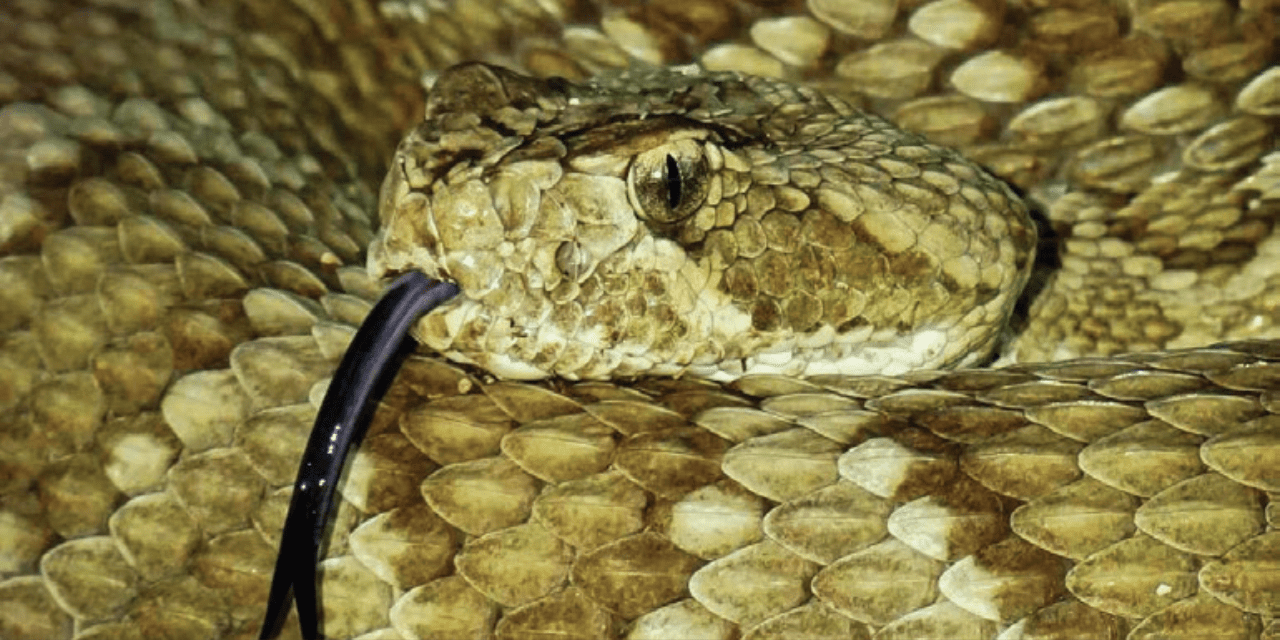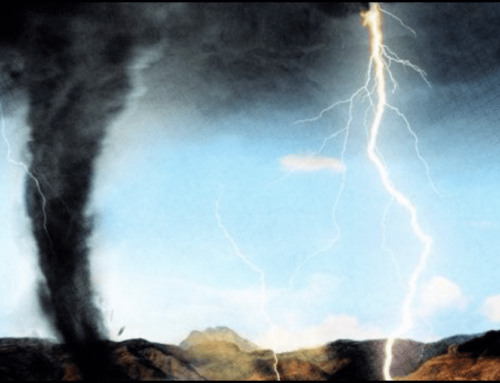
RATTLESNAKE SEASON & HIBERNATION
By Philip Bonafede
Philip Bonafede’s pet Mojave Rattlesnake, “Hollywood” Photo by Alexandra Hicks

Philip Bonafede has handled rattlesnakes since 1966. Relocated them locally since 1998 & teaches the local K9 Rattlesnake Aversion class. text 760-401-4488 or bdesert@earthlink.net
Rattlesnakes usually begin their hibernation period in mid-November, depending on the temperatures and other weather conditions. Rattlesnakes are cold blooded (exothermic) and require external heat sources for optimal mobility. Geography plays a big role as to when they sleep and when they are awake.
WHY DO THEY HIBERNATE?
Rattlesnakes need to conserve energy and body fat to survive colder weather by slowing their metabolism. Since their bodies are no longer as efficient in colder weather, this slumber is a logical part of their evolution, over the past 12 million years.
RATTLESNAKE DENS
Most rattlesnakes prefer to use the same den year after year once they have established a home range. The winter den provides safety from the elements and predators. Pack rat nests provide adequate shelter and can exceed 1000 years in age. Rattlesnakes eat rats yet refrain from them in a pack rat nest and form a symbiotic relationship.
ARE THEY REALLY ASLEEP?
Rattlesnakes are completely aware of their surroundings yet prefer not to waste energy. Some snakes may react, yet the majority do not. They may move about to relieve themselves, get a drink if water is available or move to a rodent trail for a winter meal. Hibernation is not absolute.
WINTER ENCOUNTERS
If you find a sleeping rattlesnake, please do the intelligent thing and contact one of us to properly remove it. Relocating a rattlesnake in the cold winter months requires a special knowledge of the needs of the snake!
SMART TOOLS FOR YOUR HOME
I highly recommend everyone invest in handling tools like 40-inch snake hooks and tongs to reach where you cannot see. (tongs.com) The Dot Reacher available on eBay, is a perfect all purpose, 40 inch, pick up tool, useful for picking up snakes, scorpions, black widows, sun spiders and pretty much any creepy crawly that ventures into your home! (I have one in every room!)
SPRING RATTLESNAKE SEASON
This date fluctuates from year to year by a few days yet sometime in late March the rattlesnakes wake up from their winter nap. First order of business? Food and water. After their strength has been renewed the males begin searching for a mate. During April and May, you can encounter the larger male rattlesnakes out looking for love and you may even see two males locked in battle, upright like cobras, intertwined and shoving one another until one gives up. Some people mistake this as mating.
SUMMER BEHAVIOR
Once our temperatures exceed 100 by day, Rattlesnakes become nocturnal. During the day they remain in a cool rocky area, a rodent hole, or your concrete patio next to a water bowl or faucet until just before dark when they stake out an ambush location for a rodent. If you have rodent droppings around your home, you are inviting rattlesnakes to come dine there.
LATE SUMMER FALL MATING
Baby rattlesnakes are born live August-October. After this a fall mating season begins. They have two mating seasons. I have seen them mating well into the early part of November when the temperatures are still near 80.
BENEFITS OF RATTLESNAKES
Rattlesnakes consume rodents. Rodents contribute to tens of thousands of dollars in destroyed vehicle wires, home electric wires possibly leading to a fire, garden damage and destruction, diseases including Lyme disease, plague & rabies. Rattlesnakes also help spread native plant seeds by occasionally eating birds or rodents which consumed indigenous desert plant seeds.
IF YOU SEE A RATTLESNAKE?
Leave it alone! Maintain eye contact from a safe distance and call one of our rattlesnake handlers if you desire it relocated. If you’re hiking, then quietly walk around the snake!
INVEST IN EDUCATION
Have your dogs trained in rattlesnake aversion. Teach your children the difference between venomous and non-venomous reptiles. Education replaces fear with understanding and makes you, your family, pets, and your community safer. It will also save you a lot of money in vet bills or a painful hospital visit for a bite. Rattlesnake vaccines for dogs are not recommended by the AAHA and the NSS.
REMEMBER!
‘Always look where you are placing your hands and feet.’ Even in the winter!












